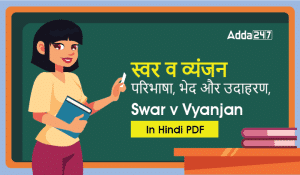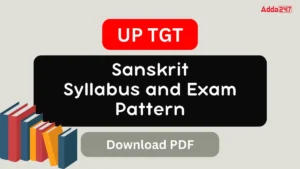Table of Contents
National Education Policy (NEP) 2020 has been approved by the Union Cabinet whose emphasis was on the setting up of an Indian Institute of Translation and Interpretation while also laying compelled emphasis on the Sanskrit language along with other Indian languages. NPE 2020 stated that a sufficient focus must be shifted towards Indian and regional languages and Sanskrit language would be mainstreamed in the education system as per the New Policy. This topic can be beneficial from the CTET perspective.
National Education Policy: Highlights of Sanskrit language
National Education policy has stated that Sanskrit will be imposed as “mainstreamed” with strong offerings in schooling – including as one of the language options in the three-language formula and also in higher studies offering schools. As per the NEP 2020, it has been proposed that the system will be established in such a way that it will hold up the extensive use of technology to aid in language translation and interpretation efforts.
- Sanskrit Universities will move towards becoming large multidisciplinary institutions of higher learning including other major subjects in their education system and so as other universities including the Sanskrit language.
- Sanskrit will be an important subject at all education levels of school and at higher education too.
- The Sanskrit Language will be included as an option in the three-language formula.
- Some foreign languages like Korean, Japanese, Thai, French, German, Spanish, Portuguese, and Russian, will also be offered at the secondary level in school education.
Multilingualism and the power of language
The new National Education Policy (NEP) has a segment called ‘multilingualism, and power of language’. In this segment, the policy has emphasized mother tongue/local language/regional language as the medium of instruction at least till Grade 5, but preferably till Grade 8 and beyond. Sanskrit is to be offered at all levels of school and higher education as an option for students, including in the three-language formula. Other classical languages and literature of India also to be available as options. No language will be imposed on any student.
- Students to participate in a fun project/activity on ‘The Languages of India’, sometime in Grades 6-8, such as, under the ‘Ek Bharat Shrestha Bharat’ initiative.
- Several foreign languages will also be offered at the secondary level.
- Indian Sign Language (ISL) will be standardized across the country, and National and State curriculum materials developed, for use by students with hearing impairment.
- NEP recommends setting up an Indian Institute of Translation and Interpretation (IITI), National Institute (or Institutes) for Pali, Persian and Prakrit, strengthening Sanskrit and all language departments in HEIs, and using mother tongue/local language as a medium of instruction in more HEI programmes.
- Teaching and learning of Indian languages need to be integrated with school and higher education at every level of education.
- Schools and colleges must provide a steady stream of high-quality learning in order to keep the languages relevant and vibrant, there must be a steady stream of high-quality learning.
- The students must be provided with study materials like textbooks, workbooks, videos, plays, poems, novels, magazines, etc. to learn the language with efficiency.
- The Policy also includes that language subjects must be frequently updated to their vocabularies and dictionaries, widely circulated in order to the most current issues and concepts.
Three Language Formula
The National Education Policy 2020 has ‘emphasised’ the use of mother tongue or local language as the medium of instruction till Class 5 while, recommending its continuance till Class 8 and beyond. The draft National Education Policy, 2019, prepared by a committee headed by scientist Dr Kasturirangan has recommended the three-language formula.
- First language: It will be the mother tongue or regional language.
- Second language: In Hindi-speaking states, it will be other modern Indian languages or English. In non-Hindi-speaking states, it will be Hindi or English.
- Third Language: In Hindi-speaking states, it will be English or a modern Indian language. In the non-Hindi-speaking state, it will be English or a modern Indian language.
The Education Policy has been reformed with various changes in the guidelines and reformation of the education system in order to bring back the focus on learning and proper education. The New Education Policy has been reformed by the expert team which is led by the former chief of ISRO K Kasturirangan who also suggested the proposal of changing the name of the Ministry of Human Resource Development with the Ministry of Education, which was approved by the Union Cabinet in the press conference. Union Minister Prakash Javedkar and Education Minister Ramesh Pokhriyal Nishank briefed the Cabinet about the New Policy of Education 2020.
Download National Education Policy (NEP) Focus on Sanskrit Language PDF (In English)
Download National Education Policy (NEP) Focus on Sanskrit Language PDF (In Hindi)




 Phases of Teaching - Stages of Teaching ...
Phases of Teaching - Stages of Teaching ...
 स्वर व व्यंजन - �...
स्वर व व्यंजन - �...
 UP TGT Sanskrit Syllabus and Exam Patter...
UP TGT Sanskrit Syllabus and Exam Patter...




